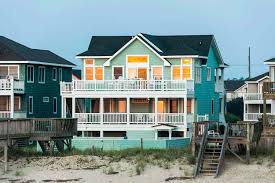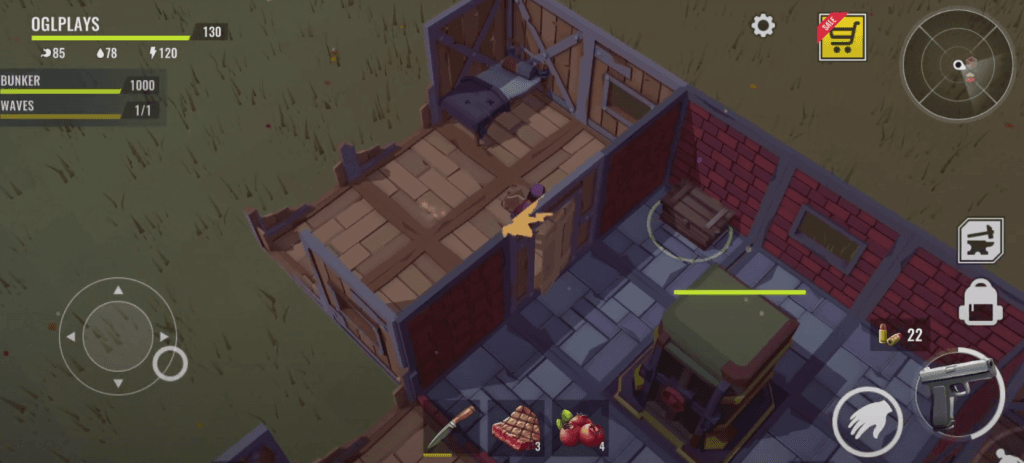Vacation Home
The Vacation Home game, officially known as Animal Crossing: New Horizons – Happy Home Paradise, is a delightful expansion to the beloved Animal Crossing: New Horizons by Nintendo. Released in November 2021, this downloadable content (DLC) transforms players into interior and exterior designers for virtual villagers seeking their dream vacation homes. Blending creativity, relaxation, and social simulation, Vacation Home has captivated players with its charming aesthetics and boundless customization options. This article explores the game’s origins, mechanics, appeal, cultural impact, and why it remains a standout in the cozy gaming genre.

Origins and Development
Vacation Home emerged as part of Nintendo’s strategy to extend the longevity of Animal Crossing: New Horizons, a global phenomenon released in 2020. The base game, set on a deserted island, allowed players to build communities, but fans craved more creative outlets. Inspired by Animal Crossing: Happy Home Designer (2015), a 3DS spin-off focused on home decoration, Vacation Home refines and expands this concept. Developed by Nintendo’s Entertainment Planning & Development team, the DLC was designed to leverage the Switch’s capabilities, offering enhanced graphics and deeper customization.
Available for $24.99 or as part of the Nintendo Switch Online + Expansion Pack, Vacation Home integrates seamlessly with the base game, requiring players to own New Horizons to access it. Its release coincided with a major free update, ensuring broad appeal. The DLC’s focus on vacation home design taps into the growing popularity of cozy games, offering a low-stakes escape during a time of global uncertainty.
Gameplay Mechanics
In Vacation Home, players join the Paradise Planning team, led by the cheerful Lottie, to design vacation homes for Animal Crossing villagers. The game begins with players traveling to a tropical archipelago, a hub where they meet clients—villagers with specific themes for their dream homes, such as “a cozy cabin” or “a retro diner.” Each project involves designing both the interior and exterior of a vacation home, along with its surrounding yard, offering unprecedented creative freedom.
The core mechanic revolves around home customization. Players select furniture, wallpapers, flooring, and outdoor elements from an expansive catalog, which grows as they complete projects. Unlike the base game, Vacation Home introduces advanced tools like partition walls, adjustable lighting, and soundscapes (e.g., beach waves or city bustle) to enhance immersion. Clients provide loose guidelines, but players can interpret them creatively, placing items like beds, tables, or quirky decorations to match the theme.
As players progress, they unlock new features, such as roommate assignments, where two villagers share a vacation home, requiring thoughtful space allocation. They also gain the ability to design community facilities like schools, restaurants, or hospitals, adding variety. Completing projects earns Poki, a currency used to purchase exclusive furniture, which can be transferred to the main island for further customization.
The game emphasizes polishing, a mechanic where players enhance objects with glowing effects, adding flair to designs. Integration with the base game allows players to apply learned techniques, like partition walls, to their island homes. The absence of strict time limits or failure conditions creates a relaxed pace, though some players note the initial tutorials feel slow.
Why Vacation Home Captivates
Vacation Home excels in delivering a cozy gaming experience, blending creativity with the charm of Animal Crossing’s anthropomorphic villagers. The game’s low-pressure environment appeals to players seeking relaxation, as there’s no wrong way to design a vacation home. The satisfaction of transforming a blank plot into a vibrant, personalized space mirrors real-world interior design but without the cost or stress.
The game’s customization depth is a major draw. With thousands of furniture items, color variants, and layout options, players can create anything from minimalist retreats to chaotic, eclectic vacation homes. The ability to revisit and redesign homes keeps the experience fresh, while villager reactions—praising or enjoying their new spaces—add emotional reward. Social features, like sharing designs online via the Happy Home Network, foster community engagement, with players showcasing creations on platforms like Reddit or X.
Vacation Home’s accessibility makes it welcoming for all ages. Its intuitive controls and colorful visuals appeal to children, while adults enjoy the strategic aspects of space management and aesthetic planning. The game’s portability on the Nintendo Switch makes it ideal for short bursts of play, whether during a commute or a cozy evening.
Educational and Cognitive Benefits
Vacation Home offers subtle but meaningful cognitive benefits. The game encourages spatial reasoning as players arrange furniture within constrained spaces, a skill linked to fields like architecture or engineering. Creative problem-solving emerges when balancing client requests with personal flair, fostering decision-making and adaptability. For younger players, the game builds fine motor skills through precise cursor movements and introduces basic design principles, like color theory or symmetry.
In educational settings, Vacation Home can inspire creativity in art or design classes. Teachers have used it to teach concepts like proportion or thematic consistency, while parents appreciate its screen-based yet wholesome nature. The game also promotes emotional intelligence, as players consider villagers’ preferences, encouraging empathy and perspective-taking.
Cultural Impact and Community
Vacation Home has left a significant mark on gaming culture, particularly within the cozy game community. Posts on X highlight players sharing elaborate vacation home designs, from zen gardens to sci-fi labs, sparking inspiration. YouTube and Twitch creators, like AbdallahSmash, stream design sessions, while fan wikis detail every villager’s preferences. The game’s integration with New Horizons has fueled its popularity, with over 40 million copies of the base game sold by 2023, ensuring a massive audience for the DLC.
The game’s cultural resonance extends to its role as a stress-reliever. During the pandemic, New Horizons became a global escape, and Vacation Home amplified this by offering a creative outlet. Its community-driven nature—through shared screenshots and design challenges—has fostered a sense of global connection. However, some players criticize the lack of new content post-launch, as the DLC hasn’t received major updates since 2021.

Conclusion
Vacation Home is a masterclass in cozy gaming, blending the charm of Animal Crossing with the joy of home design. Its accessible mechanics, deep customization, and heartwarming interactions make it a standout DLC, appealing to both casual players and dedicated designers. By empowering players to craft dream vacation homes, it offers a virtual escape that feels personal and rewarding. As fans continue to share their creations and push the boundaries of design, Vacation Home remains a testament to the power of creativity, proving that even in a digital world, there’s no place like a well-crafted home.